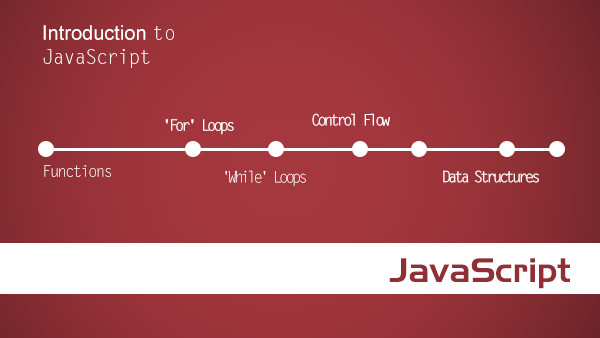本文详细介绍了JS面向对象教程,涵盖了面向对象编程的基本概念、JS中面向对象的特点以及如何创建对象和定义类。文章还深入讲解了继承、多态、封装等高级主题,并通过实例展示了如何在实际项目中应用这些概念。
JS面向对象简介什么是面向对象编程
面向对象编程(Object-Oriented Programming,简称OOP)是一种编程范式,它基于“对象”概念来组织程序代码。对象通常包含数据(属性)和方法(行为)。这种编程方式使得代码更加模块化,易于复用和维护。通过将数据和处理这些数据的方法组织在一起,可以更好地模拟现实世界中的实体和关系。
在面向对象编程中,对象是类的实例。类是一组拥有相同属性和方法的对象的蓝图。通过定义类,可以创建具有相同特性的多个对象。面向对象编程的核心概念包括封装、继承和多态。
JS中面向对象的特点
JavaScript 是一种动态类型且广泛使用的脚本语言,它支持面向对象编程。尽管在早期版本的 JavaScript 中没有原生支持“类”这个概念,但从 ES6 开始,JavaScript 引入了类的概念,使得面向对象编程更加直观和简洁。
- 原型链:在 JavaScript 中,对象通过原型链进行继承。每个对象都有一个内部属性叫
__proto__(也称为原型),指向创建它的构造函数的原型对象。 - 函数作为构造函数:JavaScript 中的函数可以作为构造函数使用,通过
new关键字来创建对象实例。 - 类和继承:ES6 引入了
class关键字,使得类的定义更加清晰。此外,JavaScript 还支持基于原型的继承和类的继承两种方式。 - 模块化:通过模块化代码,可以更好地组织和管理对象和功能,提高代码的可维护性和复用性。
使用对象字面量创建对象
在 JavaScript 中,最简单的创建对象的方法是使用对象字面量。对象字面量是一种直接定义对象的方式,语法如下:
const obj = {
property1: value1,
property2: value2,
// 更多的属性
};例如,创建一个表示人的对象:
const person = {
name: 'Alice',
age: 25,
greet: function() {
console.log(`Hello, my name is ${this.name}`);
}
};在这个例子中,person 对象有两个属性 name 和 age,以及一个方法 greet。
使用构造函数创建对象
构造函数是用于创建和初始化对象的函数。构造函数通常以大写开头,以区分普通函数和构造函数。使用 new 关键字调用构造函数来创建新的对象实例。
function Person(name, age) {
this.name = name;
this.age = age;
this.greet = function() {
console.log(`Hello, my name is ${this.name}`);
};
}
const alice = new Person('Alice', 25);构造函数 Person 接受两个参数 name 和 age,并将其赋值给 this 对象的属性。创建对象实例时,alice 对象会拥有 name 和 age 属性,以及 greet 方法。
ES6类的基本语法
ES6 引入了 class 关键字,使得定义类更加直观。类是定义对象的蓝图,用于创建具有相同属性和方法的对象实例。
class Person {
constructor(name, age) {
this.name = name;
this.age = age;
}
greet() {
console.log(`Hello, my name is ${this.name}`);
}
}
const alice = new Person('Alice', 25);在上面的代码中,Person 类定义了一个构造函数 constructor 和一个方法 greet。创建对象实例时,使用 new 关键字调用构造函数。
定义类的方法和属性
类可以定义属性和方法。属性是类的成员变量,方法是类的成员函数。属性可以直接在类中定义,方法则定义在类的方法区域内。
class Account {
constructor(ownerName, balance) {
this.ownerName = ownerName;
this.balance = balance;
}
deposit(amount) {
this.balance += amount;
console.log(`Deposited ${amount}. New balance: ${this.balance}`);
}
withdraw(amount) {
if (amount <= this.balance) {
this.balance -= amount;
console.log(`Withdrew ${amount}. New balance: ${this.balance}`);
} else {
console.log(`Insufficient balance`);
}
}
}
const myAccount = new Account('John Doe', 1000);
myAccount.deposit(500);
myAccount.withdraw(2000);
myAccount.withdraw(1000);在这个例子中,Account 类定义了 ownerName 和 balance 属性,以及 deposit 和 withdraw 方法。通过创建 Account 类的实例 myAccount,可以调用其方法进行存款和取款操作。
使用原型链实现继承
在 JavaScript 中,可以通过原型链实现继承。原型链继承是基于原型链的继承方式,一个对象的原型链上可以包含多个原型对象,每个原型对象可以包含一个或多个属性和方法。
function Animal(name) {
this.name = name;
}
Animal.prototype.walk = function() {
console.log(`${this.name} is walking.`);
};
function Dog(name) {
Animal.call(this, name);
}
Dog.prototype = Object.create(Animal.prototype);
Dog.prototype.constructor = Dog;
Dog.prototype.bark = function() {
console.log(`${this.name} is barking.`);
};
const dog = new Dog('Rex');
dog.walk();
dog.bark();
// 更多的多态行为实例
function Bird(name) {
Animal.call(this, name);
}
Bird.prototype.fly = function() {
console.log(`${this.name} is flying.`);
};
const bird = new Bird('Eagle');
bird.walk();
bird.fly();在上面的代码中,Animal 是基类,Dog 和 Bird 是继承自 Animal 的派生类。Dog 类通过 Animal.call(this, name) 调用基类的构造函数,并且通过 Dog.prototype = Object.create(Animal.prototype) 将自身的原型设置为 Animal.prototype 的副本。这样,Dog 和 Bird 类的实例可以访问 Animal 类中的属性和方法。
子类和父类的多态行为
多态是指同一个行为能够以不同的方式表现。在面向对象编程中,多态通常表现为子类重写父类的方法。
class Animal {
constructor(name) {
this.name = name;
}
walk() {
console.log(`${this.name} is walking.`);
}
}
class Dog extends Animal {
bark() {
console.log(`${this.name} is barking.`);
}
walk() {
console.log(`${this.name} is running.`);
}
}
const dog = new Dog('Rex');
dog.walk(); // 输出 'Rex is running.'
dog.bark(); // 输出 'Rex is barking.'
// 更多的多态实例
class Bird extends Animal {
fly() {
console.log(`${this.name} is flying.`);
}
walk() {
console.log(`${this.name} is flying.`);
}
}
const bird = new Bird('Eagle');
bird.walk(); // 输出 'Eagle is flying.'
bird.fly(); // 输出 'Eagle is flying.'在上面的代码中,Dog 类继承自 Animal 类,并且重写了 walk 方法。这样,当调用 dog.walk() 时,会输出 Rex is running.,而不是 Rex is walking.。
封装对象属性和方法
在面向对象编程中,封装是指将对象的属性和方法包装在一起,以隐藏内部实现细节。通过封装,可以保护对象的内部状态,防止外部代码直接访问和修改这些状态。
class Person {
constructor(name) {
this._name = name;
}
get name() {
return this._name;
}
set name(newName) {
if (typeof newName === 'string') {
this._name = newName;
}
}
greet() {
console.log(`Hello, my name is ${this.name}`);
}
}
const person = new Person('Alice');
console.log(person.name); // 输出 'Alice'
person.name = 'Bob';
console.log(person.name); // 输出 'Bob'在这个例子中,Person 类定义了一个私有属性 _name,并且提供了 name 属性的 getter 和 setter 方法,用于访问和修改 _name 属性。
使用 private 关键字保护私有成员
ES6 引入了 private 关键字,用于定义私有属性和方法。私有成员只能在类的内部访问,外部代码无法直接访问或修改这些成员。
class BankAccount {
#balance = 0;
constructor(ownerName) {
this.ownerName = ownerName;
}
deposit(amount) {
this.#balance += amount;
}
withdraw(amount) {
if (amount <= this.#balance) {
this.#balance -= amount;
} else {
console.log(`Insufficient balance`);
}
}
getBalance() {
return this.#balance;
}
}
const account = new BankAccount('John Doe');
account.deposit(1000);
console.log(account.getBalance()); // 输出 '1000'
account.withdraw(500);
console.log(account.getBalance()); // 输出 '500'在上面的代码中,BankAccount 类定义了一个私有属性 #balance,并且提供了 deposit、withdraw 和 getBalance 方法来操作和获取私有属性的值。外部代码无法直接访问或修改 #balance 属性。
小项目实战:简单的银行账户管理系统
这里我们将使用面向对象的方法来构建一个简单的银行账户管理系统。该系统支持创建账户、存款、取款和查询余额等功能。
class BankAccount {
constructor(ownerName) {
this.ownerName = ownerName;
this._balance = 0;
}
deposit(amount) {
if (amount <= 0) {
throw new Error('Deposit amount must be positive');
}
this._balance += amount;
}
withdraw(amount) {
if (amount <= 0) {
throw new Error('Withdrawal amount must be positive');
}
if (amount > this._balance) {
throw new Error('Insufficient balance');
}
this._balance -= amount;
}
getBalance() {
return this._balance;
}
}
class Bank {
constructor() {
this.accounts = [];
}
createAccount(ownerName) {
const account = new BankAccount(ownerName);
this.accounts.push(account);
return account;
}
getAccount(index) {
if (index >= 0 && index < this.accounts.length) {
return this.accounts[index];
}
return null;
}
}
const bank = new Bank();
const account1 = bank.createAccount('John Doe');
const account2 = bank.createAccount('Jane Smith');
account1.deposit(1000);
account1.withdraw(300);
account2.deposit(2000);
console.log(account1.getBalance()); // 输出 '700'
console.log(account2.getBalance()); // 输出 '2000'在这个例子中,BankAccount 类表示单个银行账户,而 Bank 类表示银行管理系统,可以创建和管理多个账户。通过封装和私有属性的使用,确保了账户余额的安全性。
面向对象的设计原则介绍
在面向对象编程中,有一些重要的设计原则,可以帮助我们编写更清晰、更可维护的代码。主要的设计原则包括:
- 单一职责原则(SRP):一个类应该只有一个变更的原因,即一个类只负责一个功能。
- 开放封闭原则(OCP):软件实体(类、模块、函数等)应该是可扩展的,但不可修改的。
- 里氏替换原则(LSP):子类型必须能够替换其基类型。
- 接口隔离原则(ISP):客户端不应该依赖它不需要的接口。
- 依赖倒置原则(DIP):高层模块不应该依赖于低层模块,二者都应该依赖于抽象。抽象不应该依赖细节,细节应该依赖于抽象。
遵循这些原则可以提高代码的可维护性和可扩展性,减少代码的复杂性。例如,通过将代码按照单一职责原则进行拆分,可以避免一个类承担过多的职责,使代码更加清晰和易于理解。
为了更好地理解这些设计原则,可以考虑以下简单的代码示例:
// 单一职责原则(SRP)
class Logger {
log(message) {
console.log(message);
}
}
// 开放封闭原则(OCP)
class Shape {
draw() {}
resize() {}
}
class Circle extends Shape {
draw() {
console.log('Drawing a circle');
}
resize() {
console.log('Resizing a circle');
}
}
class Square extends Shape {
draw() {
console.log('Drawing a square');
}
resize() {
console.log('Resizing a square');
}
}
// 里氏替换原则(LSP)
class Animal {
move() {}
}
class Bird extends Animal {
move() {
console.log('Flying');
}
}
class Duck extends Bird {
move() {
console.log('Swimming');
}
}
const animal = new Animal();
const bird = new Bird();
const duck = new Duck();
animal.move();
bird.move();
duck.move();通过这些简单的代码示例,可以更好地理解面向对象编程中的设计原则如何在实际代码中应用。希望本文能帮助你更好地理解和掌握面向对象编程在 JavaScript 中的应用。

 随时随地看视频
随时随地看视频




